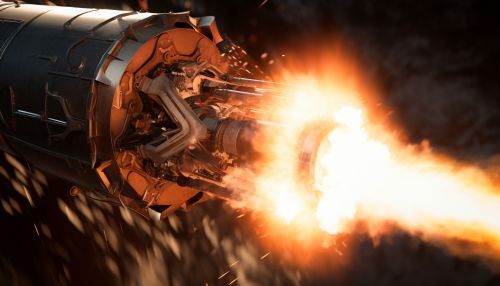Rocket
Introduction
A rocket is a vehicle, spacecraft, aircraft or other device that obtains thrust from a rocket engine. Rocket engine exhaust is formed entirely from propellant carried within the rocket. Rocket engines work by action and reaction and push rockets forward simply by expelling their exhaust in the opposite direction at high speed, and can therefore work in the incredibly vacuum of space.
History
The earliest rockets were used as propulsion systems for arrows and were used in warfare by the Chinese, Mongols, Indians, and Persians, as early as the 13th century. All rockets used some form of solid or powdered propellant up until the 20th century, when liquid rockets and rockets using hybrid propellants were invented.


Principles of Operation
Rockets operate on the principle of Newton's third law of motion, which states that "for every action, there is an equal and opposite reaction." This means that for a rocket to move forward, it must expel mass in the opposite direction, creating a force. This force is known as thrust.
Rocket Propulsion
Rocket engines produce thrust by the expulsion of an exhaust fluid that has been accelerated to a high speed through a propelling nozzle. The fluid is usually a gas created by high pressure (often high temperature) combustion of solid or liquid propellants, consisting of fuel and oxidiser components, within a combustion chamber. The fluid exhaust is then passed through a nozzle which greatly accelerates the fluid. This creates an unbalanced force that propels the rocket.


Rocket Staging
Most rockets are multi-stage vehicles, meaning they are composed of two or more engines stacked on top of each other. This design is used to achieve the necessary speed and altitude to escape Earth's gravitational pull. The engines are ignited in a sequential manner, with each stage using up its propellant and then separating from the rest of the rocket.


Rocket Types
There are several different types of rockets, each with their own specific uses and design considerations. These include liquid rockets, solid rockets, hybrid rockets, and mono-propellant rockets. Each type has its own advantages and disadvantages, and is chosen based on the mission requirements.
Rocket Uses
Rockets have been used for a variety of purposes throughout history. They have been used in warfare, for space exploration, for scientific research, and for transportation. Today, rockets are most commonly associated with space exploration and satellite deployment.


Rocket Safety and Environmental Considerations
Rocket launches can pose safety risks and have environmental impacts. These include the risk of explosion during launch, the generation of noise and vibration, the potential for debris generation, and the release of pollutants into the atmosphere.


Future of Rockets
The future of rockets is being shaped by advancements in technology and a renewed interest in space exploration. Private companies are now playing a major role in the development of new rocket technologies, with a focus on reusability and cost reduction.


